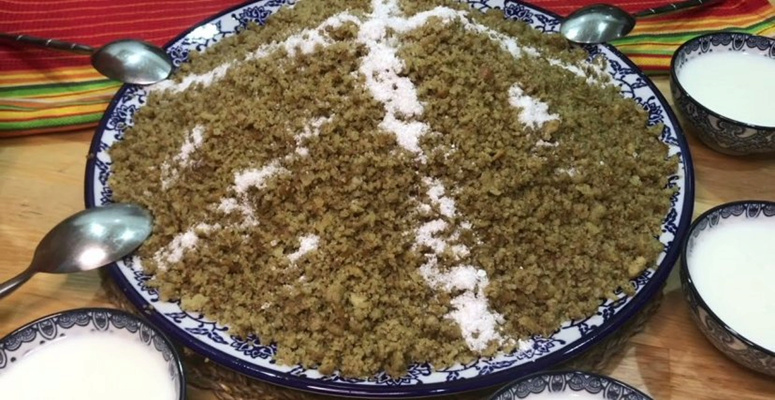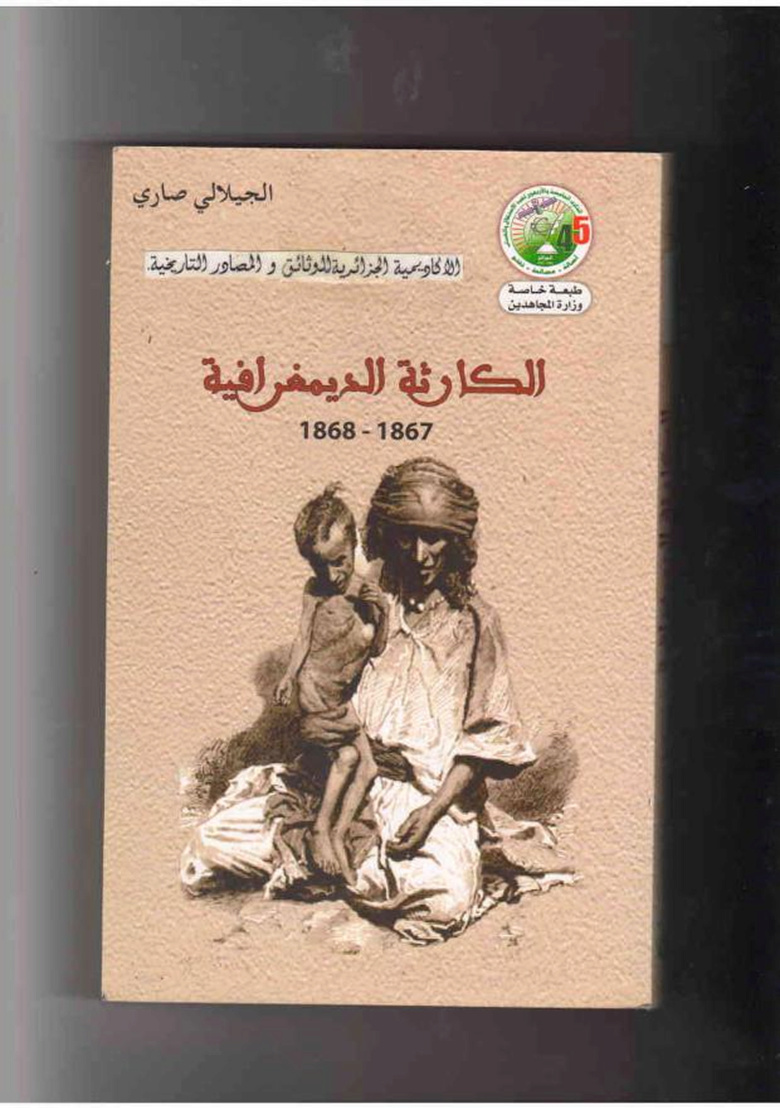"Bulbul"... an ancient dish with which the Algerians fought colonialism and famine.. this is its story

Between the years 1867 and 1868, Algeria, while under the rule of French colonialism, experienced a great ordeal represented by the "famine", the effects of which were dire, a tragic demographic catastrophe resulting from the abhorrent colonial policy that confiscated the property of Algerians and displaced them. Despite the loss of life, only those Algerians survived. It was thanks to his contemplation of his food and eating methods... as did the residents of Medea (70 km south of the capital) who “invented” the “bulbol” food.. So what is the story of the dish?

Stories differed about the origin of the “bulbol” dish. Is it an Ottoman dish linked to the period of the Turks in Algeria, or a dish born out of the “famine” that the country witnessed in the 1860s?
At the end of the 1960s, locusts spread, drought spread, famine and diseases such as cholera and rhinovirus spread, with differences in severity from one region to another, not to mention that colonialism resorted to raising the prices of food and grains, raising taxes, confiscating lands, and the Jews monopolizing everything. Which led to the death of about a million Algerians, according to what was stated in the book “The Demographic Catastrophe 1867/1868” by the writer Djilali Sari. While other historical sources stated that the number of dead reached 500 thousand people.

Al-Bulbul...and a life-or-death battle
The academic at Abdelhamid Ibn Badis University, Mostaganem, Mokhtari Al-Tayeb, mentions in an article about “Algerians’ positions on colonial policy after the famine of 1867.” He quoted some of his information from Muhammad Al-Saleh Al-Antari’s book “The Famines of Constantine” and published it in 2022 in the magazine “Insan and Majal” that “the Algerians’ suffering with... The locusts did not stop, so they were struck by the earthquake that struck Blida and Mitidja (near Medea), along with typhus and cholera, forcing people to eat grass, dig up graves, and eat what is not permissible to eat.”

In light of these disasters that struck various Algerian regions, residents of other regions, especially the Medea region, resorted to searching for a way to survive, given the threat of famine threatening their lives, and the French policy that besieges them from every side.
They applied economy in eating and relied on the little they saved of agricultural products that “survived” the oppression of colonialism.. “Bulbul” was one of them, which contributed to saving the city’s residents from hunger, during that difficult ordeal.
The popular dish, “bulbol,” is still widespread and famous in the city of Medea, south of the capital, Algiers, compared to its absence and lack of impact in other states, whether in the north, south, west, or east. Or rather, most Algerians do not know what this traditional dish is, which accompanied the Algerian people in their greatest trials and tribulations.

"The lifesaver dish"
Despite the different accounts about its origin, whether it is an Ottoman dish linked to the period of the Turks in Algeria, or a dish born out of the “famine” that the country witnessed in the 1860s, it has remained preserving its characteristics that appeared in its essence, simplicity, and “economics.”
The inhabitants of Medea Algeria do not do without this healthy dish, as it accompanies their tables throughout the year and its consumption is widespread in the winter and spring seasons, given that the region is known for its cold climate. It is also served on special occasions and on Fridays, and it also forms part of the heritage of Medina cuisine (relative to Medea), along with Other ancient dishes, such as “dishisha al-marmaza,” “couscous,” “asaban,” “al-khali,” “tabkha,” and “asaban.”
It is boiled and mixed with thyme powder and olive oil, and served hot with yoghurt or milk, whether to guests or the family. It is known as a “heavy” food that gives the body a feeling of fullness, which is the wisdom behind it, as Algerians resorted to it during the famine tragedy that befell them during the 19th century.
The process of preparing it is easy and simple, and its ingredients are not many and not expensive, as women dry the dry bread (kasra), whether made from barley or wheat, then purify it with water, squeeze it afterward so that it does not knead, and sift it using a “sieve” two or three times, depending on its condition, and it comes out. The fine flour, which is “bulbol”, then begins the process of sprinkling it through “cuscas” placed on a pot of boiling water, to which water vapor rises, then it is sprinkled with water and some ground thyme is added to it.
“Balboul” is a dry bread or “kasra” that women grind, then roll it like couscous, then
Before removing it from the “pot”, olive oil or butter is added to it... and thus it becomes ready for consumption.

“Bulbul” for “selling” on social media platforms
The "Bulboul" dish began to go out from its local city of Medea, to customers in other cities, by selling and marketing it through social media platforms at different prices depending on the quantity of the dish in kilograms.
Pages have spread on social media platforms promoting the sale of “bulboul,” including the “Mediya Agabin” page, which displays “bulboul” dishes at different prices. The price ranges between 380 DZD and 450 DZD ($2) per kilogram.
Source: Websites*

